Recently, the outbreak of monkeypox is striking many countries in Europe. The World Health Organization (WHO) has reported a cumulative total of 257 laboratory-confirmed cases and about 120 suspected cases as of 26 May, with Europe being the region with the most cases with 217 confirmed cases.
This spread has been highlighted by many media coverage of how the virus is spread, the use of the Smallpox vaccine, and updates on monkeypox case numbers. However, news of the spread of the monkeypox virus may lead to framing how this virus is viewed as a “black people disease”, which can lead to racism against African people. Here are some explanations on how it could lead to “black people disease” being framed in the media.
Photos of Black People with Monkeypox in Media Coverage
It is not uncommon for the media to describe the monkeypox virus as an “African disease” (Black People Disease) by using photos of black people with monkeypox. This has attracted attention from several parties, one of which is The Foreign Press Association Africa (FPAA). The FPAA explained that monkeypox virus is like any other disease, it can occur in any region and afflict anyone regardless of race and ethnicity. Therefore, the FPAA believes that there is no race or skin complexion that should be the face of this disease.
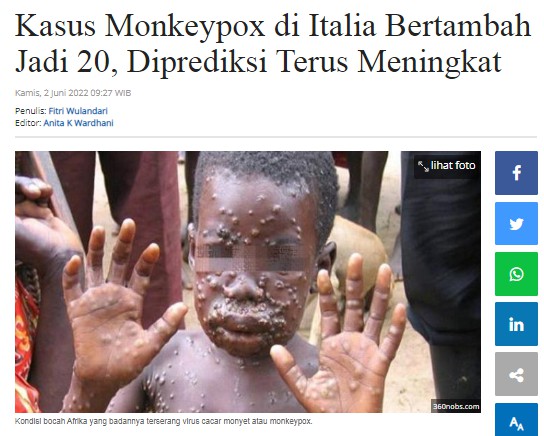
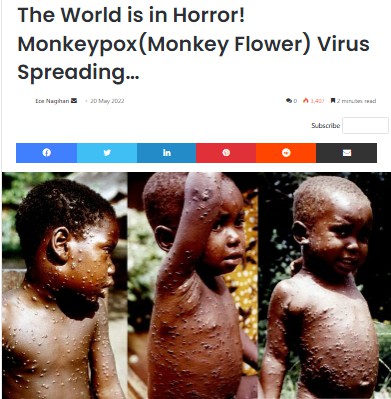
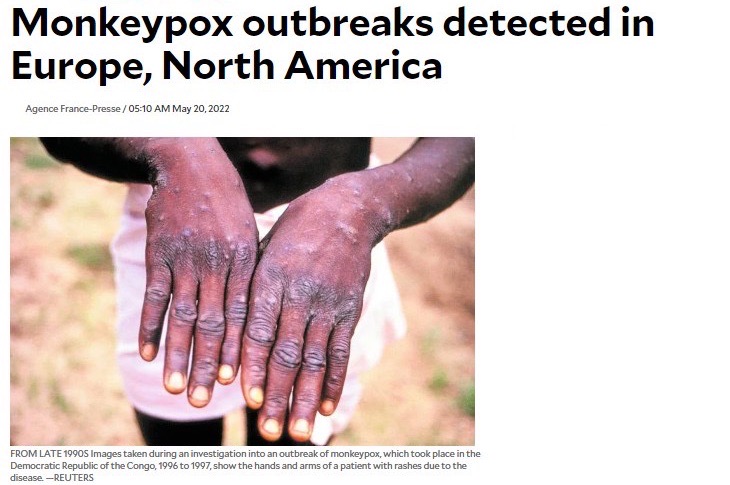
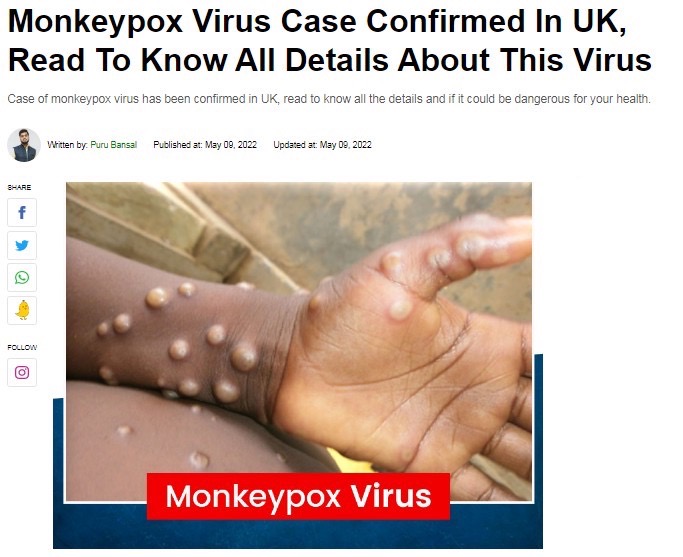
(source: expatguideturkey.com, tribunnews.com,thehindu.com, onlymyhealth.com)
According to the statement made by the FPAA, It becomes odd when the news about the monkeypox case in Europe used photos taken in Nigeria, describing how Nigerians were exposed to the virus. Supposedly, the media can use photos of how people in Europe get the disease if the news covers the monkeypox outbreak in Europe. Using photos of Nigerians with monkeypox in reporting the spread of this virus in non-African regions seems to convey the message that this disease is an “African disease”.
The Notion of a “Highly Unusual Case”
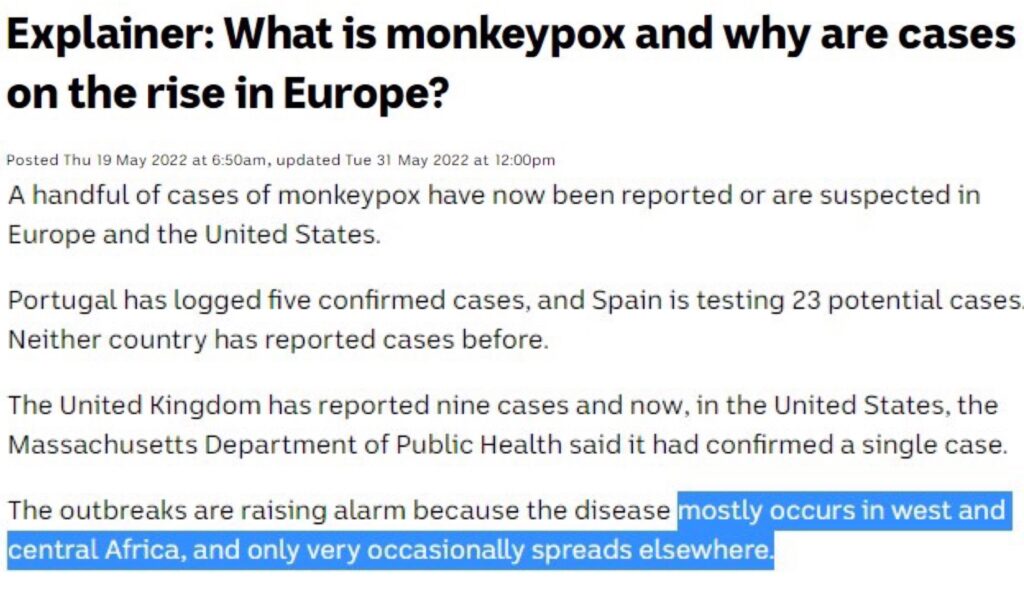
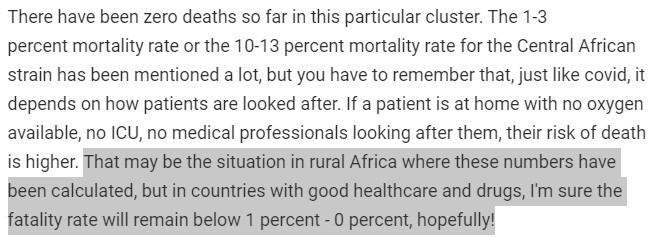
(Source: NDTV and ABC News)
The form of Europe-centric news can be seen from the narrative “an highly unusual case” in describing the monkeypox cases in Europe, mentioning monkeypox as endemic to Africa and is rarely spread outside of it. Such narratives tend to create negative stereotypes about the African race. This stigmatization can be exacerbated by narratives that describe how poor health facilities in Africa are. An NPR opinion article said that journalists should frame this story by providing facts about the virus, not to stigmatize the monkeypox case as a common case in Africa and rare in Europe as if Africans are the only possible causes of this Virus.
Africa has close links with Europe in terms of tourism. ABC News noted that one possible scenario behind the increase in cases would be increased travel as COVID restrictions are lifted. However, WHO states that the identification of confirmed and suspected monkeypox cases are not directly linked to travel from endemic areas. It means that such a biased narrative in the media requires the media to explain more about the background of the spread of this virus, not stating the outbreak as a “highly unusual occurrence”. Otherwise, the incomprehensive and biased media explanation of this virus will lead to the view of monkeypox as an exclusively African disease.
The Unclear Historical Explanation about the Virus
A fact-finding narrative would do better than show how monkeypox is becoming a rare disease outside Africa, according to the NPR article. Monkeypox cases were recorded before this outbreak occurred, namely in 2003 where monkeypox outbreaks happened in several states in the USA due to direct contact between humans and infected pet prairie dogs. Far from it, this virus has even existed since the European colonies arrived in Africa. The article posted in the Washington Post stated that in addition to the rubber trade that came from Europe to Africa, disease was also something that was brought in by Europe through Cameroon, including monkeypox.
As WHO stated, monkeypox is a viral zoonosis (a virus transmitted to humans from animals) with symptoms very similar to those seen in the past in smallpox patients. It is transmitted from one person to another by close contact with lesions, body fluids, respiratory droplets and contaminated materials such as bedding. This spread can also occur because eating undercooked meat and other animal products from infected animals is a possible risk factor. Even various animal species have been identified as susceptible to monkeypox virus, although further research in this regard is still needed.
These explanations show that even though the virus primarily occurs in Central and West Africa, it can appear anywhere in the world and is not necessarily caused by transmission from Africans to non-Africans.
Opini penulis adalah tanggung jawab penulis dan tidak menjadi tanggung jawab redaksi Warta Kema Unpad
Penulis: Rifia Azka
Editor: Fareez Eldacca
Foto:



